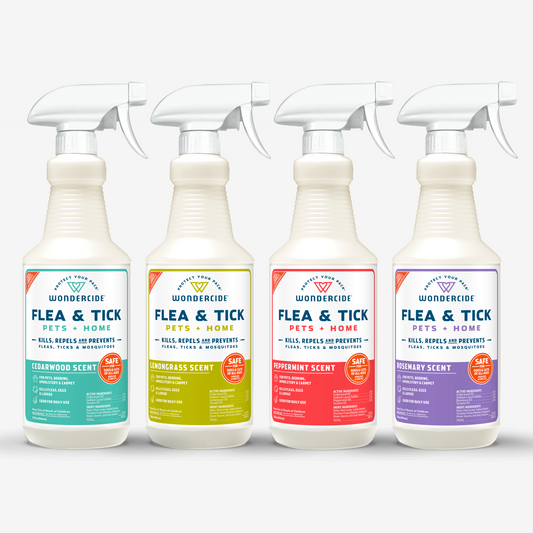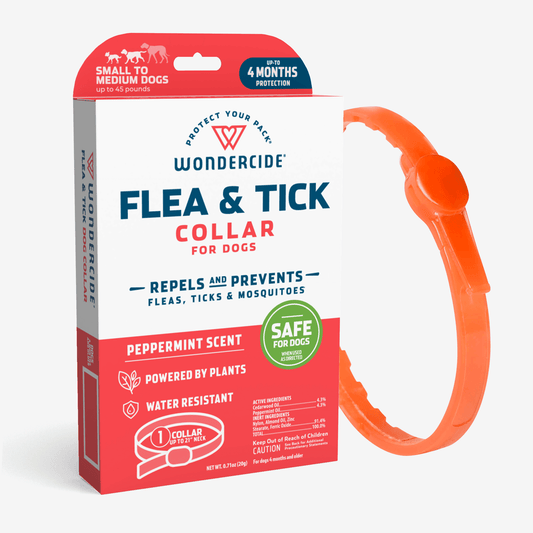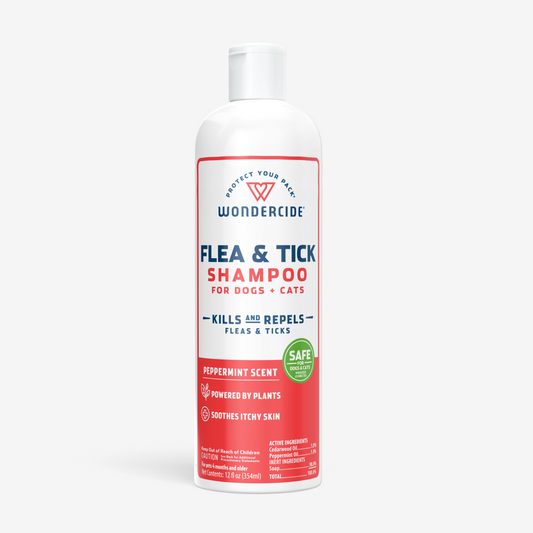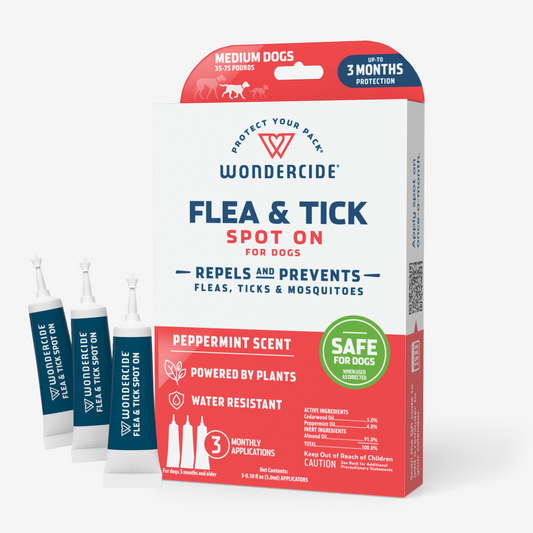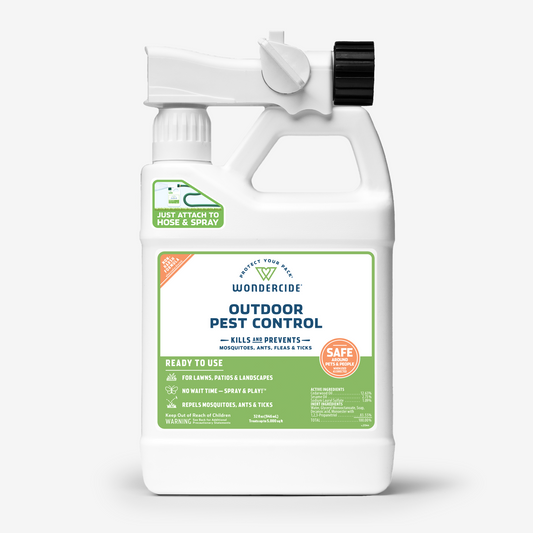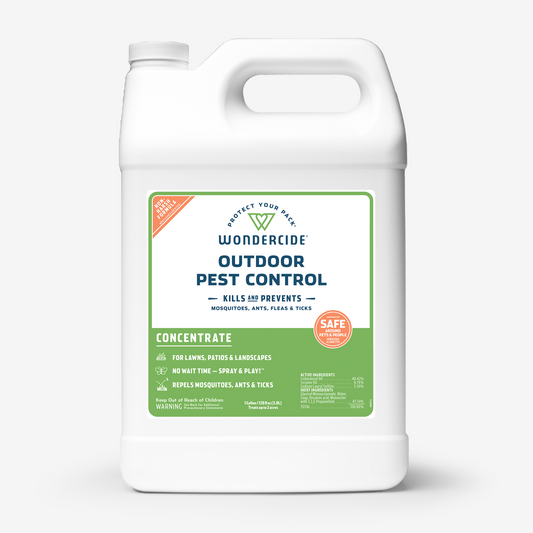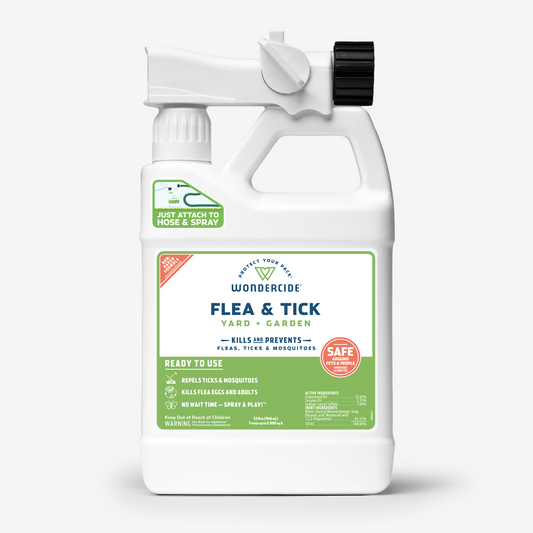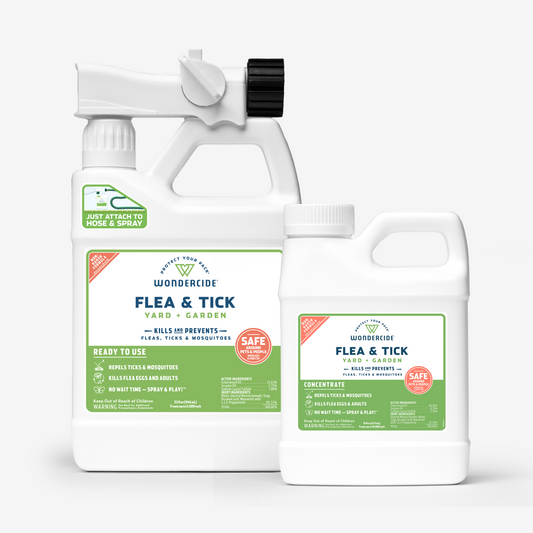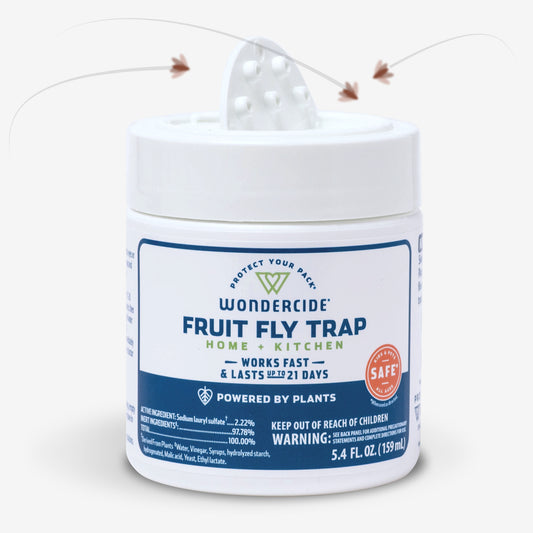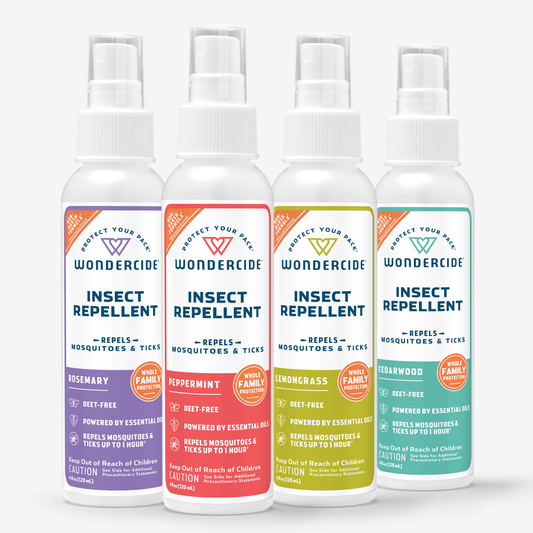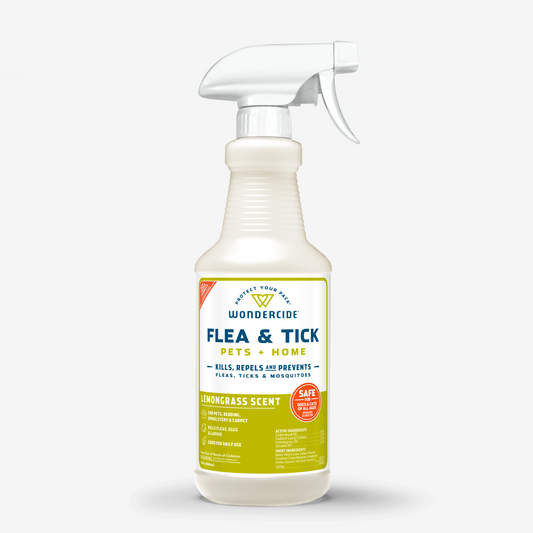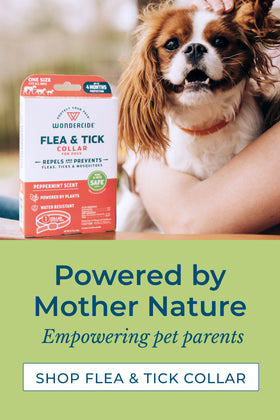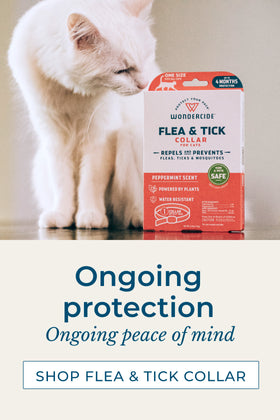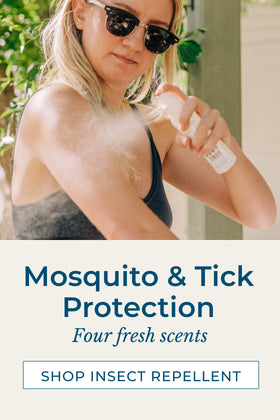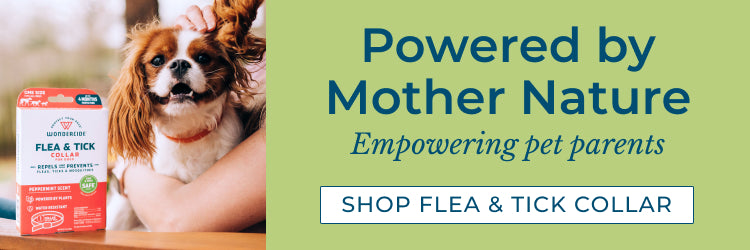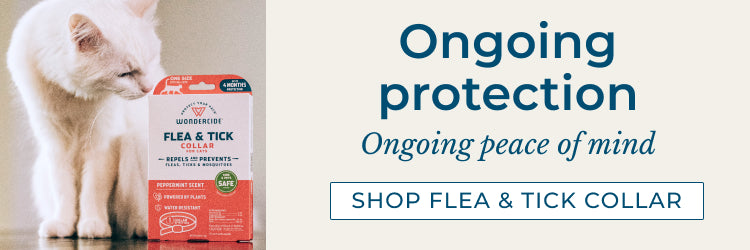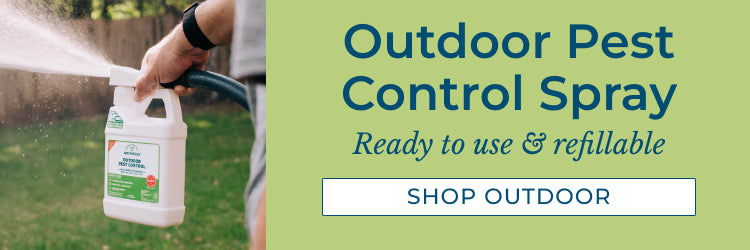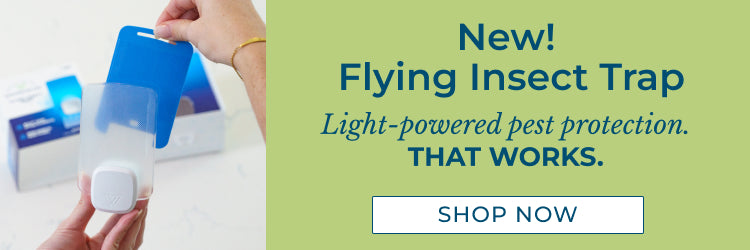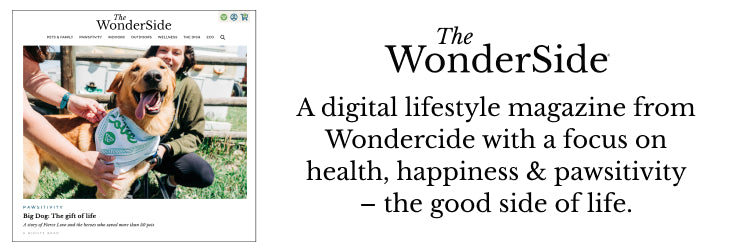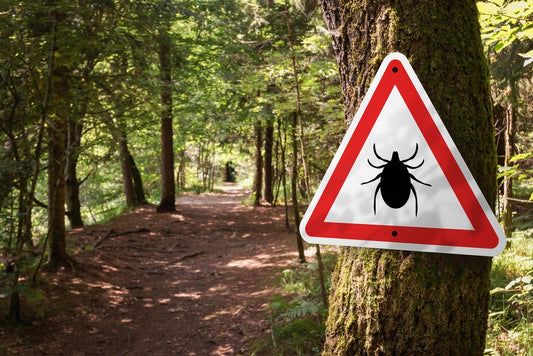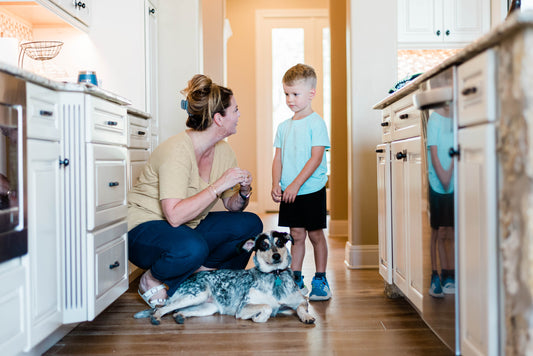Dog mites are tiny arthropods – joint-legged invertebrates – that live on top of or burrow into a dog’s skin or hair follicles and can cause itching, inflammation, and hair loss. Not all cases of dog mites are problematic, but there are certain types of mite infestations that can lead to more serious health complications.
To help you understand and prevent a dog mite infestation, we’ve created this guide to everything you need to know about mites on dogs.
Types of Mites on Dogs
There are four types of dog mites that result in noticeable symptoms and effects.
1. Sarcoptes scabiei mites
Also known as canine scabies, these mites burrow into the skin rather than merely reside on its surface. Symptoms include an increase in itching, especially around the groin and armpits, as well as red skin and hair loss. If left untreated, it can lead to mange.
2. Otodectes cynotis mites
Known most commonly as ear mites, otodectes cynotis mites live on the surface of the ear and feed on ear debris. Symptoms include ear scratching, intense head shaking, and black or brownish-red crust in the ear.
3. Cheyletiella yasguri mites
Cheyletiella yasguri mites reside on the surface of the skin and can cause a condition called cheyletiellosis, aka walking dandruff. The name walking dandruff comes from the flakes caused by an infestation of cheyletiella mites — the walking part is a nod to the mites a doctor would see when they looked at an infected dog’s skin under a microscope.
4. Demodex canis mites
By far the most common type of mites, demodex canis mites live in hair follicles and are found even on healthy, well-cared-for dogs. Their presence often isn’t problematic unless the dog’s immune system is compromised and cannot fend off overpopulation. If their population does increase, it results in itching and inflammation, and ultimately mange.
How Do Dogs Get Mites?
Mites are most commonly passed from dog to dog after coming into contact at places like a park, animal shelter, or groomer. Even if dogs are checked before entering or leaving these spaces, mites typically go unnoticed due to their microscopic size.
Beyond direct contact with another dog, mites can also be picked up from the environment that’s been contaminated with mites, such as infested beds or carpets. Mite transfer from infested surfaces is also how dogs can get reinfected, so it’s a good idea to clean bedding and household surfaces after you’ve found mites on your dog.
How Do I Know if My Dog Has Mites?
Maybe your dog is always itching, even though they don’t have fleas… but how do you know that they have all dog mites, instead? Only some mites are visible to the naked eye. While they all have a round, oval-shaped body (adults resemble spider-like creatures with eight legs) they’re only about one millimeter in length, so even if you can see them, they’ll only look like tiny black, white, or red dots.
You would need a microscope to confidently identify a dog mite by its appearance, so it’s usually better to look for symptoms related to a mite infestation, instead.
Dog Mite Symptoms
Regardless of what type of mite is hitching a ride on your dog, the symptoms can be bothersome, uncomfortable, and even painful. Here are some signs of dog mites that will help you identify their presence.
Keep in mind that some of the symptoms of mite infestations can mimic other conditions like ear infections or skin allergies. If you think your dog may have a mite infestation/mange, visit your vet who can provide an accurate diagnosis and determine the root cause of the issue.
Complications of Untreated Dog Mites
When mite infestations are not addressed promptly, they can lead to more serious complications.
Secondary skin infections, mange, and scabies
Mange is most commonly caused by sarcoptic mites but, as discussed above, can also be caused by demodectic mites under the right conditions. Mange caused by sarcoptic mites is called scabies. Manage caused by demodectic mites is called demodex mange, demodectic mange, red mange, or simply mange.
Types of dogs most commonly affected by demodectic mange include:
In all types of dogs, certain risk factors may make a sarcoptic or demodectic mite infestation harder to get rid of and more problematic, including stress, an unclean environment, intestinal heartworms, and age.
Untreated mange or scabies can be deadly. If you see patchy skin on your dog’s face, they might be suffering from mange, and you see your holistic vet as soon as possible.
Ear damage & hematoma
Some of the worst mite symptoms occur as the result of self-trauma caused by itching and discomfort associated with mites. Incessant ear scratching can result in damage to the ear canal. Dogs who excessively shake their head due to ear mites can develop a hematoma (or swelling of blood) in the brain.
How to Get Rid of Mites on Dogs
1. Visit your vet if you suspect an infestation
Dog mite infestations are a treatable condition with a variety of solutions. After diagnosing a mite infestation, a traditional veterinarian will most likely prescribe either a topical treatment like a dip, shampoo, or cream, or an oral medication. In some cases, the vet will prescribe an antibiotic or antifungal medication to address a secondary infection.
Ask your vet to consider underlying factors such as how your dog’s diet and lifestyle may be affecting its immune system. A dog with a well-rounded, nutritional, and natural diet can develop a healthier immune system that’s able to better control mite populations before they get out of hand.
2. Clean your dog’s belongings and living space
Whatever mite treatment route you and your vet choose, it’s important to thoroughly clean and disinfect your dog’s bed and other belongings. Wash sheets, plush toys, rugs, collars, leashes, or cushion covers your dog may have used while affected by the mites. Separate the infected dog from other household pets in a comfortable and safe area. Wash your hands and change your clothes after handling or providing care to a dog with mites.
3. Take preventative measures and follow best practices
Since treatment for dog mites is usually fairly straightforward, it may be tempting to only address the issue when it becomes a problem. However, a few good habits will go a long way in helping to keep your pooch happy and healthy.
When you adopt or rescue a stray dog, thoroughly examine it for signs of mites and mange. If the mange is advanced and there is hair loss or redness, visit a veterinarian as soon as possible.
How frequently you should bathe your dog will depend on their breed, size, length of coat, and lifestyle, but a very general rule is to bathe your dog at least once every 2-3 months. When washing, be careful not to get water in the ears, as moisture can lead to ear infections. Brush, comb, and trim your dog consistently; if you have a breed with long hair, make sure to keep their coat clean by regularly brushing and trimming it.
Whether or not there are symptoms of dog mites, keeping their bedding clean will help with their overall hygiene.
Opt for a less processed approach to nutrition when choosing food and snacks for your dog. Look for natural options over processed food and snacks. On top of feeding your dog healthy food, remember to provide 24/7 access to clean water, as proper hydration is essential for a healthy dog. You can also incorporate immune-boosting supplements like neem bark powder which is known to provide digestive and immune support.
Ask questions about potential boarding or daycare facilities to verify they meet sanitary standards that will help prevent dog mites from spreading
Some mites are highly contagious. Let friends and family members know about mite infestations so that you reduce the likelihood of dogs passing mites back and forth.
More Pest Control Info by Wondercide:
- Do Fleas Die in Winter?
- How to Get Rid of Mosquitos in Your Yard
- How to Get Rid of Centipedes in Your Home
- How to Get Rid of Gnats in Your Home
- How to Get Rid of Fruit Flies in Your Home


